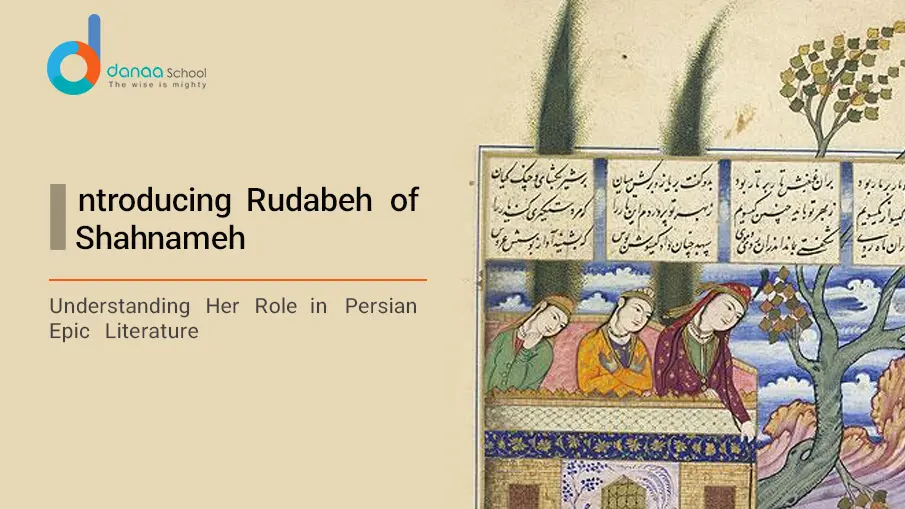How to Say Personality in Farsi: Meaning, Words, and Examples
Understanding how to say personality in Farsi helps you describe yourself and others more naturally in this rich and poetic language. In Persian, the word for personality is شخصیت (shakhsiyat), a versatile term used to describe character traits, individuality, and social identity.
This article explains the meaning of شخصیت, introduces common Persian adjectives for personality traits, and shows how to use them in everyday sentences. You’ll also see how structured learning platforms like Danaa School can improve your Persian vocabulary.
What Does شخصیت Mean in Farsi?
شخصیت is a noun that refers to the qualities, behavior, and identity that define a person. It comes from the word شخص (shakhs), meaning “person,” and is commonly combined with adjectives to describe personality traits.
Common Uses of شخصیت
- Describing character: او شخصیت قوی دارد. (He/she has a strong personality.)
- Referring to public figures: شخصیتهای معروف در این فیلم بودند. (Famous personalities were in this movie.)
- Personal development: کتابها به رشد شخصیت کمک میکنند. (Books help develop personality.)
Personality Words in Farsi
Persian offers a rich set of adjectives to describe personality. Below are common words grouped by meaning.
Positive Personality Traits
- مهربان (mehrabân) – Kind
- صادق (sâdegh) – Honest
- پرشور (por-shur) – Passionate
- صبور (sabur) – Patient
- باهوش (bâ-hush) – Intelligent
Negative Personality Traits
- خودخواه (khod-khâh) – Selfish
- لجباز (laj-bâz) – Stubborn
- بیصبر (bi-sabr) – Impatient
- حسود (hasud) – Jealous
- دروغگو (dorugh-gu) – Liar
Neutral or Situational Traits
- آرام (ârâm) – Calm
- عجیب (ajib) – Strange
- سادهدل (sâde-del) – Naive
Which Persian Adjective Describes You?
Most people identify with more than one personality trait. Your personality may change depending on mood or situation.
- Are you more باهوش (intelligent) or مهربان (kind)?
- Do you feel پرشور (passionate) in some situations?
- Do others see you as صادق (honest) or لجباز (stubborn)?
Example Sentences
- من همیشه صادق هستم. (I am always honest.)
- او خیلی مهربان و پرشور است. (He/she is very kind and passionate.)
The Cultural Importance of Personality in Persian Society
In Persian culture, personality traits such as kindness, humility, and honesty are deeply respected and strongly influence social relationships.
- تواضع نشانه بزرگی شخصیت است. (Humility is a sign of a great personality.)
- صداقت بهترین سیاست است. (Honesty is the best policy.)
Learn Farsi Personality Vocabulary with Danaa School
To master Farsi personality vocabulary, structured learning is essential. Danaa School offers guided lessons focusing on vocabulary, pronunciation, and cultural context.
- Interactive video lessons
- Context-based vocabulary learning
- Guided speaking practice
Was Rudabeh a real historical figure?
Rudabeh is a legendary figure in Persian mythology, celebrated in Ferdowsi’s Shahnameh, rather than a historical figure.
What significance does Rudabeh hold in Persian culture?
Rudabeh symbolizes the virtues of love, beauty, and resilience, embodying cherished ideals within Persian folklore and culture.
Are there variations of Rudabeh's story in other cultures?
While Rudabeh’s tale is rooted in Persian mythology, echoes of her story can be found in various folktales and myths, reflecting universal themes of love and heroism.
What lessons can we learn from Rudabeh's story?
Rudabeh’s narrative teaches us about the transformative power of love, the strength of adversity, and the importance of resilience in facing challenges.
Why is Rudabeh's marriage to Zal significant?
Rudabeh and Zal’s union defied social norms and familial expectations, serving as a testament to the enduring power of love and the pursuit of happiness against all odds.
How is Rudabeh depicted in visual arts and literature?
Rudabeh has been depicted in various forms of artistic expression, including paintings, sculptures, poetry, and music. Artists often portray her as a symbol of beauty, grace, and strength, capturing the essence of her character in different mediums.
What role does Rudabeh play in shaping gender dynamics in Persian mythology?
Rudabeh’s character challenges traditional gender roles by showcasing qualities typically associated with heroism and agency. Through her actions and decisions, she contributes to a nuanced understanding of gender dynamics, highlighting the complexities of relationships and societal expectations in Persian culture.
Conclusion
In the grand tapestry of Persian mythology, Rudabeh Shahnameh shines as a radiant beacon of love, beauty, and resilience. Her story, woven into the fabric of Shahnameh, is a testament to the enduring power of myth and legend, captivating hearts and minds across generations with its timeless appeal and universal truths.
Are you fascinated by the timeless tales of heroes and legends from Persian mythology? Do you want to explore the epic world of the Shahnameh and discover the wisdom and beauty hidden within its pages? Look no further than Danaa School’s Shahnameh classes!









